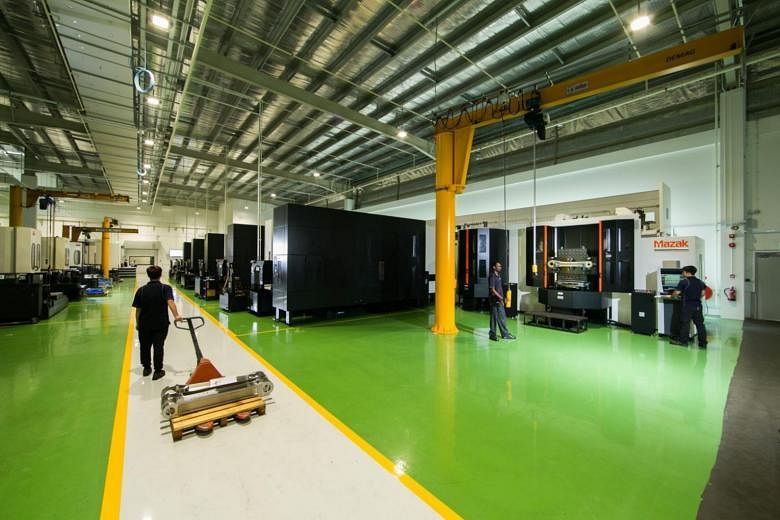Data analytics has lit a fire under a sluggish retail sector - but it is the manufacturing industry that has galloped ahead here.
The sector's enthusiasts are focusing on one main element of this bold new digital process - predictive maintenance.
As more and more machines are hooked up to sensors in the "Industrial Internet of Things", data analytics can flag which parts may soon need repair or replacement.
Manufacturers have also embraced being able to filter out information into more precise segments to better evaluate individual facilities or a division's performance.
Infor, which provides data solutions to industry, said factories make up between 30 per cent and 40 per cent of its clientele here. Mr Cas Brentjens, Infor's solution consulting director for Asia-Pacific and Japan, told The Straits Times that smart manufacturers now look jointly at multiple systems in their quest to boost productivity.
He cited how overtime is typically tracked by human resources, while a separate factory-specific system monitors quality. "With business intelligence tools, you can combine that and think, 'Do people with a high level of overtime have the same level of quality?' "
One of the clients at Mr Brentjens' firm is Armstrong Industrial Corporation, which supplies rubber and foam components for industries from cars to hard drives.
Armstrong group deputy chief executive Phyllis Ong pegged the biggest gain from data analytics as wastage reduction, helped by a detailed breakdown of how each factory is doing. "The ease is not about getting data," said Ms Ong.
Her aim is instead to have workers feel that they can use the information to make sound choices about factory processes.
"Then you can benchmark and are able to refer and infer what the implications are for future decision-making. At the end of the day, I think the crux of this intelligence is to make better decisions and know whether you are healthy or not."
Another firm that has tapped predictive maintenance is Finnish crane maker and operator Konecranes, which is active in some 50 countries, including Singapore. Dr Mikael Bjorkbom, Konecranes' manager of crane intelligence and analytics, raised his company's case study in a presentation at the SAS conference in Amsterdam in the Netherlands.
He later told The Straits Times: "If there were some incidents, we could go back and see if there were maybe signs already, (or) maybe we could show that the customer had misused the crane and it was not our liability."
But while computers can crunch numbers, Armstrong's Ms Ong emphasises that the human touch is still essential in decision-making.
This sentiment is shared by Mr Soh Chee Siong, chief executive of JEP Precision Engineering: "When we get so much data, when we put it together in the room and look at it, everybody starts to get scared."
He told the Manufacturing Productivity Technology Centre conference herelast month: "The key thing is, we have to be very patient. Look at the chart and see where you want to go from there. Where is the bottleneck?
"Start working from there and look for the low-hanging fruit first. Because when you do it successfully, then you can really motivate the people and they want to do more."
JEP recently invested $35 million in a new 200,000 sq ft smart factory, which opened last week in Seletar Aerospace Park.
Annabeth Leow


